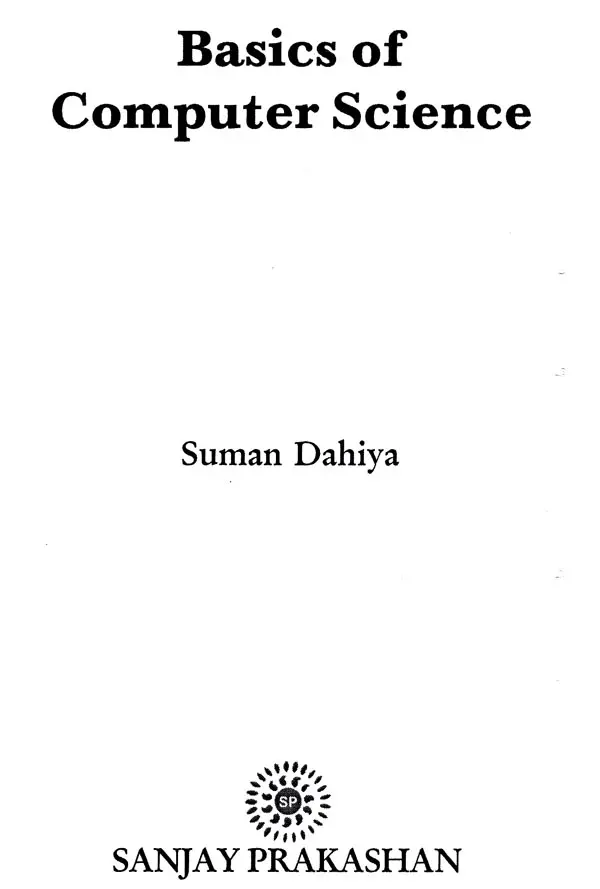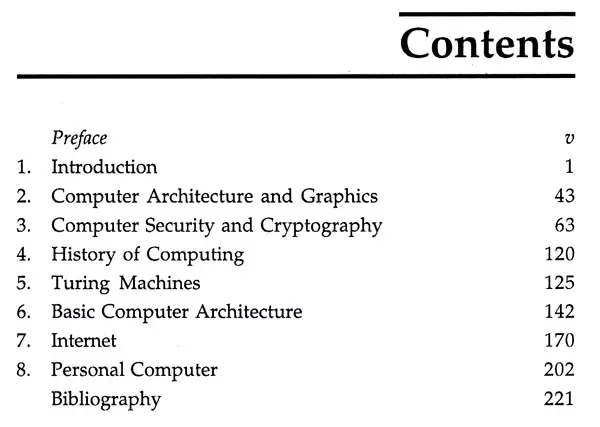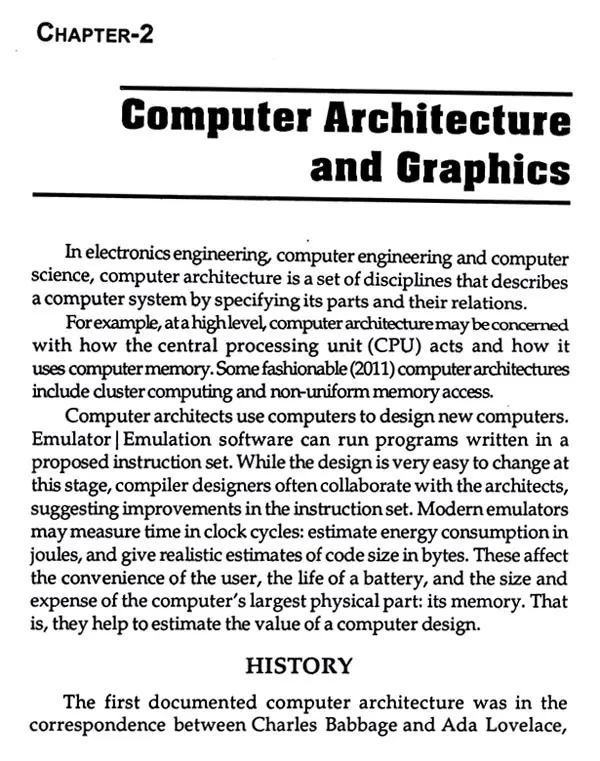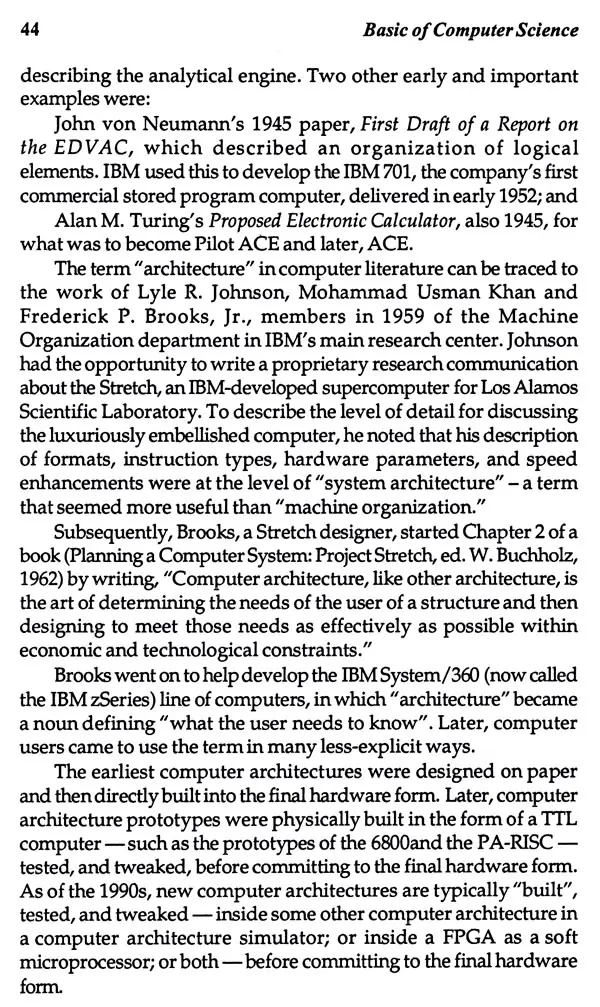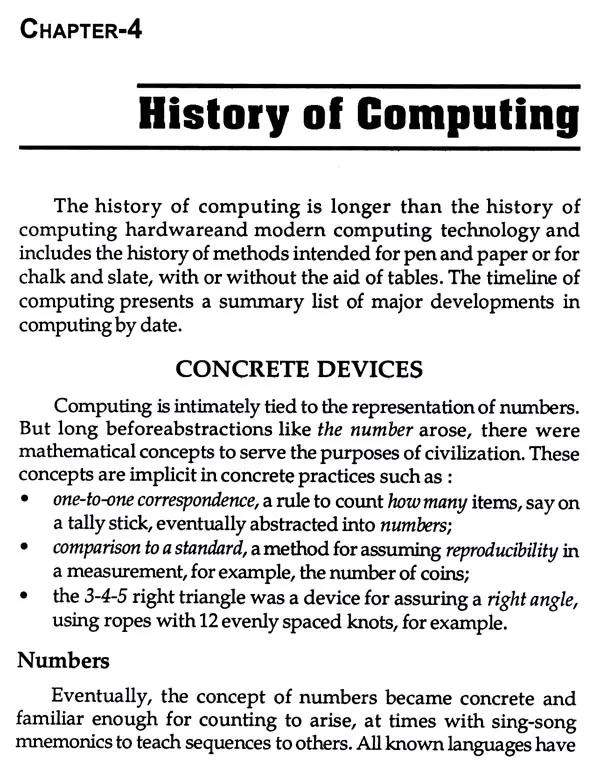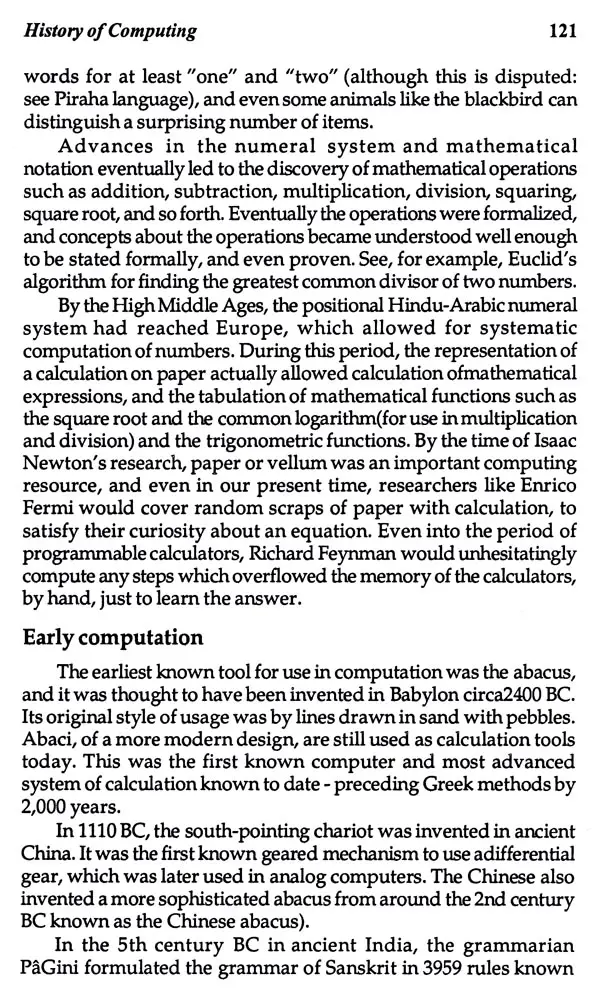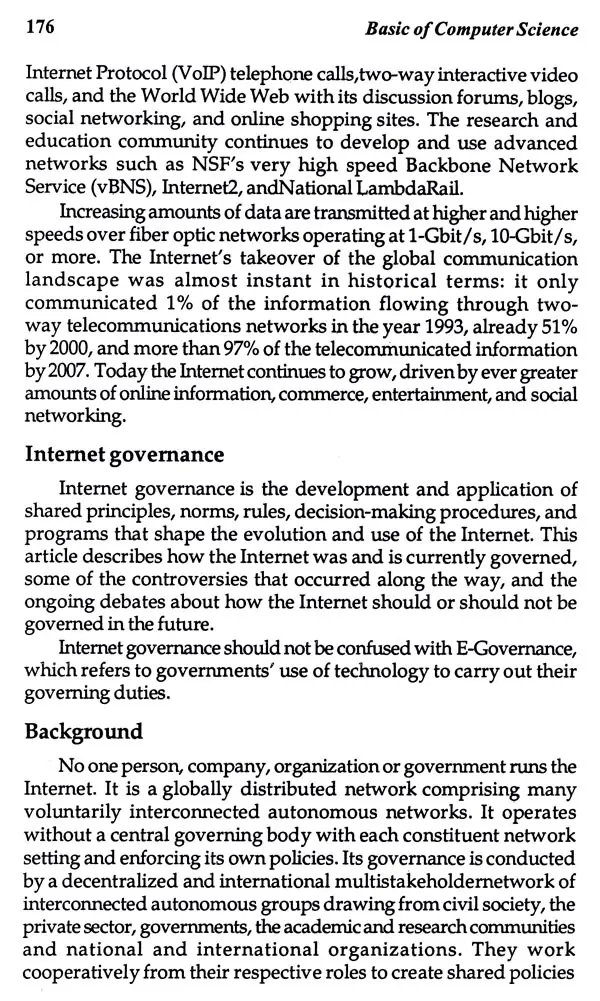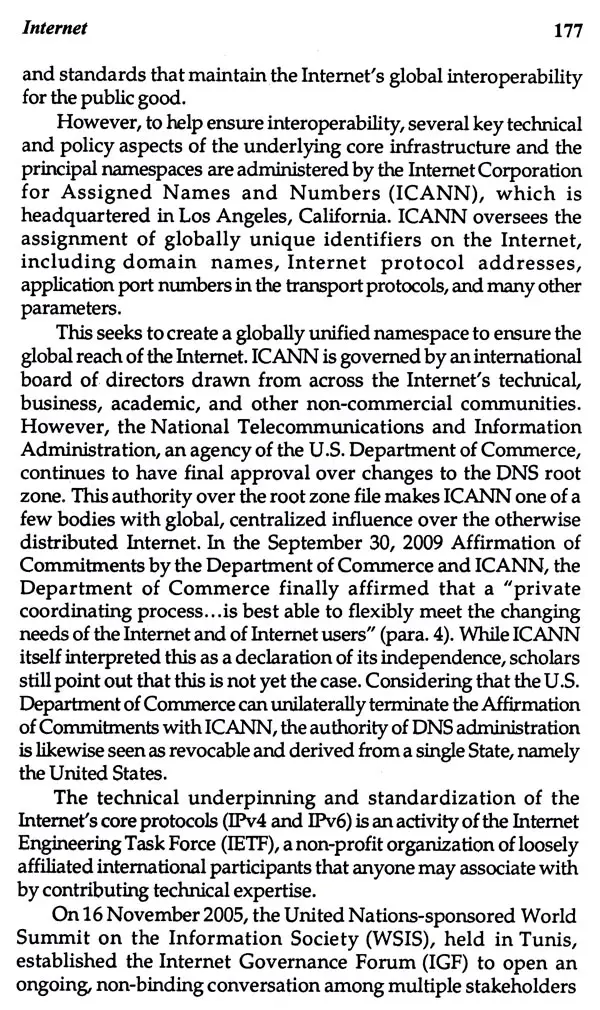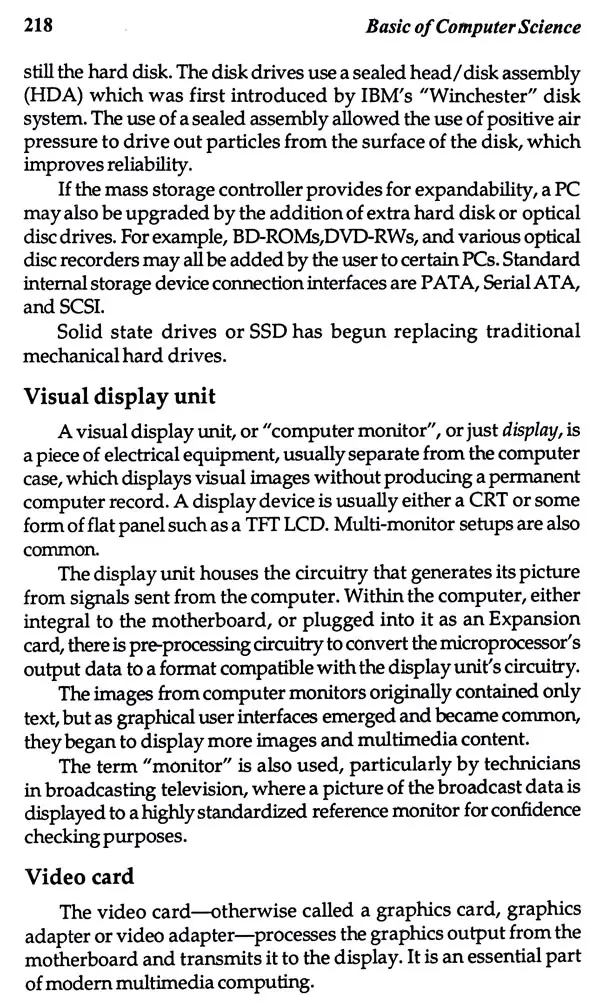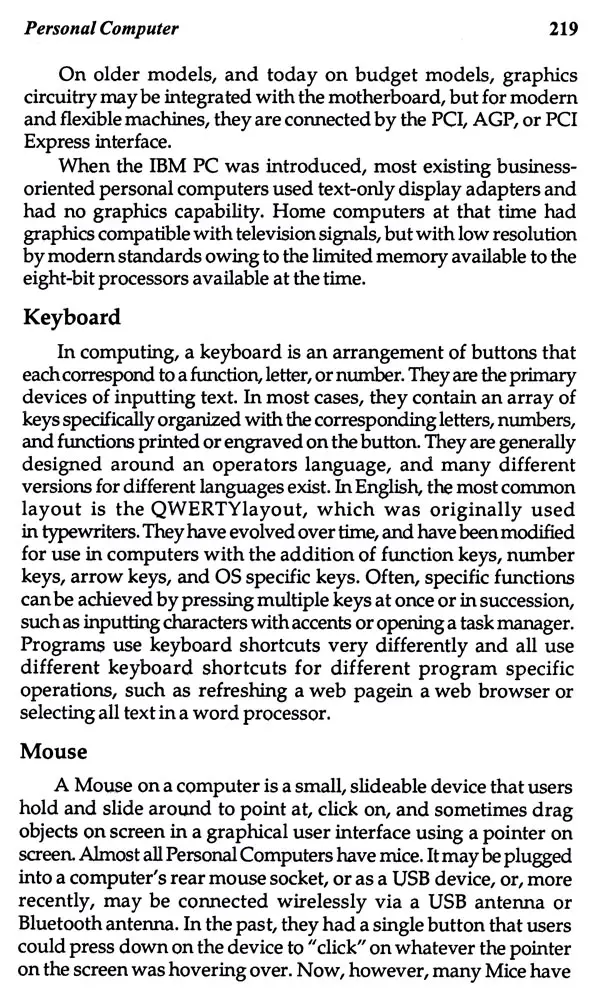
Basics of Computer Science
Book Specification
| Item Code: | UAH787 |
| Author: | Suman Dahiya |
| Publisher: | Sanjay Prakashan |
| Language: | English |
| Edition: | 2014 |
| ISBN: | 9788174533333 |
| Pages: | 224 |
| Cover: | HARDCOVER |
| Other Details | 9.00 X 6.00 inch |
| Weight | 440 gm |
Book Description
Computer science is the scientific and practical approach to computation and its applications. It is the systematic study of the feasibility, structure, expression, and mechanization of the methodical procedures (or algorithms) that underlie the acquisition, representation, processing, storage, communication of, and access to information, whether such information is encoded as bits in a computer memory or transcribed in genes and protein structures in a biological cell.
Computer science is the scientific and practical approach to computation and its applications. It is the systematic study of the feasibility, structure, expression, and mechanization the methodical procedures (or algorithms) that underlie the acquisition, representation, processing, storage, communication of, and access to information, whether such information is encoded as bits in a computer memory or transcribed in genes and protein structures in a biological cell. A computer scientist specializes in the theory of computation and the design of computational systems.
Its subfields can be divided into a variety of theoretical and practical disciplines. Some fields, such as computational complexity theory (which explores the fundamental properties of Computational and intractable problems), are highly abstract, while fields such as computer graphics emphasize real-world visual applications. Still other fields focus on the challenges in implementing computation. For example, programming language theory considers various approaches to the description of computation, whilst the study of computer programming itself investigates various aspects of the use of programming language and complex systems. Human-computer interaction considers the challenges in making computers and computations useful, usable, and universally accessible to humans.
Computer science is the scientific and practical approach to computation and its applications. It is the systematic study of the feasibility, structure, expression, and mechanization of the methodical procedures (or algorithms) that underlie the acquisition, representation, processing, storage, communication of, and access to information, whether such information is encoded as bits in a computer memory or transcribed in genes and protein structures in a biological cell. A computer scientist specializes in the theory of computation and the design of computational systems.
Its subfields can be divided into a variety of theoretical and practical disciplines. Some fields, such as computational complexity theory (which explores the fundamental properties of Computational and intractable problems), are highly abstract, while fields such as computer graphics emphasize real-world visual applications. Still other fields focus on the challenges in implementing computation. For example, programming language theory considers various approaches to the description of computation, whilst the study of computer programming itself investigates various aspects of the use of programming language and complex systems. Human-computer interaction considers the challenges in making computers and computations useful, usable, and universally accessible to humans.
The history of computer science began long before the modern discipline of computer science that emerged in the 20th century, and hinted at in the centuries prior. The progression, from mechanical inventions and mathematical theories towards the modern concepts and machines, formed a major academic field and the basis of a massive worldwide industry. Early history
The earliest known as tool for use in computation was the abacus, developed in period 2700-2300 BCE in Sumer. The Sumerians' abacus consisted of a table of successive columns which delimited the successive orders of magnitude of their sexagesimal number system. Its original style of usage was by lines drawn in sand with pebbles. Abaci of a more modern design are still used as calculation tools today.
The Antikythera mechanism is believed to be the earliest known mechanical analog computer. It was designed to calculate astronomical positions. It was discovered in 1901 in the Antikythera wreck off the Greek island of Antikythera, between Kythera and Crete, and has been dated to c. 100 BCE. Technological artifacts of similar complexity did not reappear until the 14th century, when mechanical astronomical clocks appeared in Europe.
Mechanical analog computing devices appeared a thousand years later in the medieval Islamic world. Examples of devices from this period include the equatorium by Arzachel, the mechanical geared astrolabe by Abu Rayhân al-Biruni, and thetorquetum by Jabir ibn Aflah. Muslim engineers built a number of automata, including some musical automata that could be 'programmed' to play different musical patterns. These devices were developed by the Banu Müså brothers and Al-Jazari Muslim mathematicians also made important advances in cryptography, such as the development of cryptanalysisand frequency analysis by Alkindus.
**Contents and Sample Pages**
